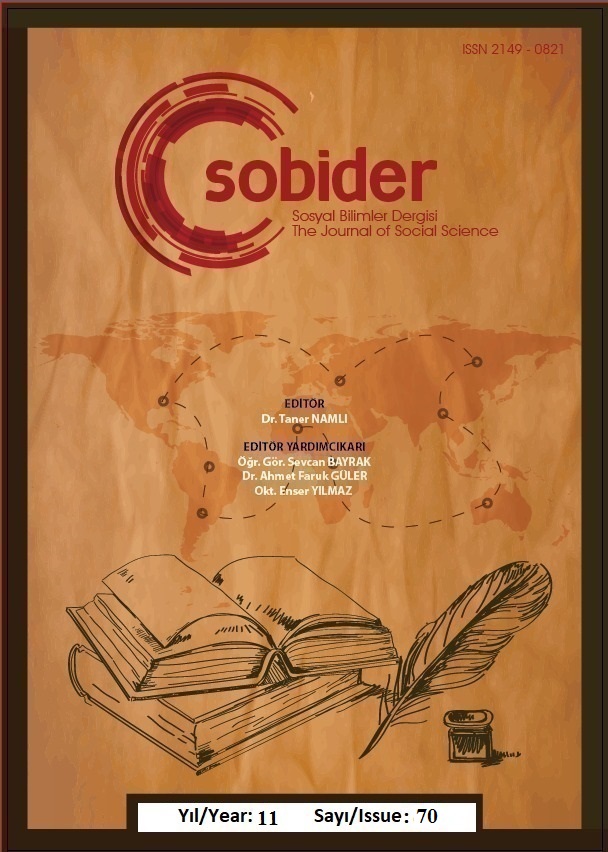Author :
Abstract
Gramer çalışmalarında Türk dilinin eklerine, yaygın şekilde yapım ve çekim eki olarak iki üst başlık altında yer verilmesi birçok sorunun temel kaynağı durumundadır. Bu sorunların bir tarafında da sıfatlama ekleri yer almaktadır. Çünkü bu ekler, genellikle yapım ekleri olarak değerlendirilmektedir. Ancak son yıllarda eklerin şekillerine göre değil, işlevlerine göre değerlendirilmesinin önemini ortaya koyan çalışmalar yapılmış, buna göre adı geçen ek sınıfının Türk dilinin ekleşme düzenindeki yeri, içeriği ile birlikte tespit edilmiştir. İsme eklenmesi yönüyle yapım ekiyle ortak hareket eden ancak ondan farklı olarak anlam değiştirmeyen bu ek sınıfının yapım eki olarak gösterilmesi uygun değildir. Anlam değiştirmemekle birlikte, eklendiği isme sıfat görevini kazandırması bakımından isim tamlamasını kuran ekler sınıfı içinde yer alan sıfatlama ekleri, çeşitli alt işlevlere sahiptir. Miktar da bu alt işlevlerden biridir. Bu bağlamda, eldeki çalışmada sıfatlama eklerinin miktar işlevli olanlarının örnekleri, Eski Anadolu Türkçesi döneminin gramer özelliklerini en iyi şekilde yansıtan Garḭb-nāme adlı eserde tespit edilmiş ve kaydedilmiştir.
Keywords
Abstract
The fact that the suffixes of the Turkish language are commonly included under two headings as derivational and inflectional suffixes in grammar studies is the main source of many problems. On one side of these problems are adjective suffixes. Because these suffixes are generally considered as construction suffixes. However, in recent years, studies have been carried out that reveal the importance of evaluating suffixes according to their functions, not their shapes, and accordingly, the place of the said suffix class in the affixation order of the Turkish language has been determined together with its content. It is not appropriate to show this suffix class as a derivational suffix, which acts in common with the derivational suffix in terms of being added to the noun, but unlike it, does not change its meaning. Adjective suffixes, which are included in the class of suffixes that form the noun complement, have various sub-functions in that they do not change the meaning, but give the function of adjective to the noun to which they are added. Quantity is one of these sub-functions. In this context, in the present study, examples of adjective suffixes with quantity functions were identified and recorded in the work named Garḭb-nāme, which best reflects the grammatical features of the Old Anatolian Turkish period.





